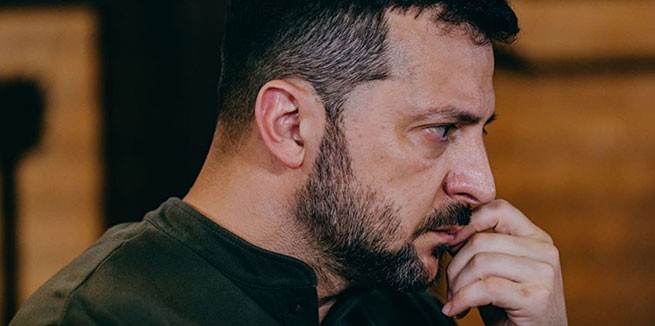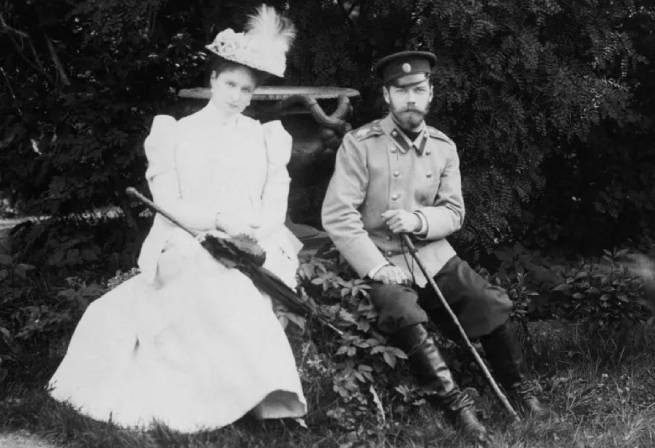Six amazing facts about the Romanov couple, Emperor Nicholas II and his wife Alexandra Feodorovna, the peculiarities of whose life have always aroused burning curiosity in society. Some perceived them as almost saints, others believed that “nothing human is alien to them.” About the secrets behind the walls of the royal residence.
Mistresses, imaginary and real
Anna Akhmatova was called one of the emperor's passions – supposedly in the 1910s, a passionate romance happened between the young poetess and the emperor. However, Anna Andreevna remained silent on this matter, only fueling the public’s interest. But historians consider Nicholas’s relationship with the ballerina Matilda Kshesinskaya beyond doubt.
The dancer met the future tsar in 1890 at the graduation ceremony of the ballet school. The seating arrangement at the dinner was not accidental. It is possible, researchers believe, that Alexander III himself deliberately ordered Matilda to be seated next to Nicholas, hoping that his son would become more confident and courageous. And it worked: feelings flared up between the young people. Their romantic meetings took place in a rented apartment on English Avenue. But the romance turned out to be fleeting – from 1890 to 1894, during which the Tsarevich also managed to make a long trip around the world.
After Nicholas' wedding to Alexandra Fedorovna, the heir to the throne's relationship with the ballerina ceased. The ruler entrusted the care of his former passion to his cousin, Sergei Mikhailovich, who was next to Matilda for the next quarter of a century.
Unloved spouse
On June 6, 1872, a fourth daughter appeared in the family of the Grand Duke of Hesse and Rhine – Victoria Alice Elena Louise Beatrice of Hesse-Darmstadt. After moving to Russia, converting to Orthodoxy and marrying Nicholas II, she began to be called Alexandra Fedorovna. But behind the scenes, people more often called it the “Hessian fly,” for which there is a reason.
Alix (as the empress was called at home, a derivative name from Alice and Alexandra) was not at first impressed with Russia, about which she wrote to her sister’s maid of honor: “My husband is surrounded everywhere by hypocrisy and deceit. I feel that there is no one here who could be his real support. Few love him and their Fatherland.”
The contents of the letter became known to the public, after which many considered the princess arrogant and arrogant. Since then, the empress has been accused of many offenses, even those that had nothing to do with her. With the outbreak of the war, she was completely slandered, calling her a German spy and traitor. In those same years, it was nicknamed the “Hessian fly” – this insect is a pest that devastates fields of wheat and rye. By the way, the February Revolution began precisely with a shortage of bread…
After the imperial family was canonized, they are trying to erase evidence of the people’s bad attitude towards Alexandra Feodorovna from history. It must be admitted that she did a lot of good deeds for the country, but the fact remains that Alix was still treated with great caution.
Imperial tattoo
In the fall of 1890, the heir to the Russian throne set off on an extensive journey to the East, starting from Gatchina. The “tour” lasted almost a year: the future monarch with his retinue traveled more than 50 thousand kilometers by rail and sea. After exciting adventures in Africa, India and Indochina, Nikolai Alexandrovich arrived in Japan on board the cruiser “Memory of Azov”. He was delighted:
“This is a completely different country, unlike those we have seen so far.”
Following the English fashion of the time, tells edition “Find out everything”, in Nagasaki the future monarch decided to get a tattoo. He asked Japanese dignitaries to organize a meeting with local artists, which surprised them: tattoos were usually only done by the Yakuza, members of an organized criminal “gang.” But the request was granted, and the very next day a large image of a dragon adorned Nikolai’s hand.
The grandiose journey almost ended tragically: in the Japanese town of Otsu, they tried to kill the heir to the throne. The policeman, who hated foreigners, attacked Nikolai, hitting him on the head with a katana*. The second blow could have been fatal, but it was prevented by Tsarevich George: the brother of the future king knocked the policeman down. After the assassination attempt, a nine-centimeter scar remained on the emperor’s head, and throughout the rest of his life the man was tormented by headaches.
Nicholas II was a heavy smoker
Researchers claim that Nicholas II was the heaviest smoker among all Russian monarchs. A hobby harmful to health was predetermined by fate – he grew up in a family where smoking was commonplace, his parents Alexander III and Maria Fedorovna were also not indifferent to tobacco smoke. It was under Alexander Alexandrovich Romanov that the tradition of morning smoking among the grand dukes developed. According to eyewitnesses, after eating, Nikolai could smoke two or three “rather large and thick” cigarettes, and he put out the first one halfway through, so that he could then happily finish the next one.
From financial documents it is clear that in nine months of 1917 Nikolai Alexandrovich used up 8 thousand cigarettes: that is, he smoked 25–30 pieces a day! This habit was shared by other members of his family. The Empress began smoking in 1905, probably to cope with stress during the First Russian Revolution. Despite numerous attempts, she was never able to get rid of this addiction.
The king’s daughters made their “contribution” by presenting their father with smoking materials on holidays. But did the Grand Duchesses themselves indulge in cigarettes? Apparently, yes. In some photographs you can see how one or the other is holding a cigarette. There is even a photo of Tsarevich Alexei with a cigarette in his mouth. But perhaps he was simply imitating the adults, given his young age and fragile health.
Alcohol – almost daily, but in moderation
Nicholas II, like other Russian monarchs, was not known for his sobriety. In accordance with centuries-old tradition, the crown prince from a certain age had the right to order alcoholic drinks to his rooms. For example, historians say, on January 1, 1886, the 17-year-old heir to the throne was served two bottles of wine, 14 bottles of kvass and a bottle of beer for breakfast – the day before he vigorously celebrated the New Year.
Gradually, Nikolai began to drink alcohol almost daily, but in moderation. The ruler often attended officer feasts, at the beginning of which he was served a glass of cold vodka – it had to be dashingly knocked over. At royal dinners, vodka and aquavit were always present (a Danish strong drink, which, apparently, the emperor’s mother, who was Danish by birth, introduced the family to).
At especially special moments, champagne was offered: first French, and in later years exclusively domestic, Abrau-Durso. Nicholas also favored slivovitz and Portuguese port, however, having once tasted the Crimean port “Livadia”, the tsar ordered to stop purchasing the drink from Europe. There is a legend that it was the emperor who invented the Nikolashka snack, which consisted of a slice of lemon sprinkled with a mixture of powdered sugar and ground coffee: it was supposed to be consumed with cognac.
The Empress preferred wines: red “Lacrima Christi” (“Tears of Christ”) and “White No. 24”. Lacrima Christi was a very rare and valuable wine produced in Crimea from the Italian Aleatico grape variety since the end of the 19th century.
Suspiciousness and superstition
Alexandra Feodorovna and Nicholas II were a superstitious couple. Alexandra Feodorovna surrounded herself with people of dubious reputation. Witch doctors and charlatans often compromised the dignity of the royal family and sought to influence the political decisions of the couple. Everyone knows that Alix was under the influence of the legendary healer Grigory Rasputin. But before him, the woman “worked together” with the French swindler Philippe Nizier.
From an early age, Nizier convinced everyone around him that he had unique abilities. In 1872, he opened a clinic in Lyon, where, using hypnosis, “astral dynamism” and “psychic fluids,” he “treated” people for a variety of ailments. However, in France, such activities required a medical license, which Philip was never able to obtain. I had to be content with a semi-legal position.
Major General and diplomat Valerian Muravyov-Amursky was perhaps the first Russian to meet Nizier in person. In 1900, he attended a séance in Paris to mark the anniversary of the execution of Louis XVI, where Philip allegedly evoked the spirit of the deceased king. But it was not he who introduced the magician to the royal family, but the Montenegrin princesses Milica and Anastasia (Stana), who subsequently brought Rasputin to the Romanov palace.
Nizier came to Russia in 1901 and 1902, spending several months here. Alexandra Feodorovna, with the help of Philip, tried to resolve a personal issue: she could not give birth to an heir. From 1895 to 1901, she gave birth to four daughters, but the country expected something else from her.
Historians note that the hypnotist deftly ingratiated himself into the trust of weak-willed and neurotic people. For the Empress, who was on the verge of a nervous breakdown, Nizier acted as a kind of psychotherapist. Nikolai also succumbed to the magician’s charms: witnesses stated that the couple left the healer “as if in ecstasy, with enlightened faces and sparkling eyes.”
In 1902, noticing signs of pregnancy in the ruler, Nizier predicted the birth of a son. For this, Nicholas II, according to some sources, granted the Frenchman the diploma of Doctor of Medicine honoris causa. But alas, the pregnancy ended in miscarriage. Yes, maybe there was no child – they said that the impressionable Alix could simply invent something extra for herself.
After the scandal erupted, Philip went to Crimea, and from there to France and never returned to Russia. But the Romanovs did not stop believing in Nizier’s miraculous abilities: after all, two years later, Alexandra Feodorovna finally gave birth to a boy. It is known that until her last days the empress kept with her the icon with a bell that Nizier had given her, believing that it protected her from evil people.
*Katana is a long Japanese sword. The shape of the blade of the katana resembles a saber, but its handle is straight and long, which allows the use of a two-handed grip. The pommel is missing. The slight bend of the blade and the sharp end also allow piercing blows.







More Stories
Six Greek high school students win medals at International Mathematical Olympiad
Olympic Games: Greek Delegation Athletes Head to Paris
Big "police purge" on Athos